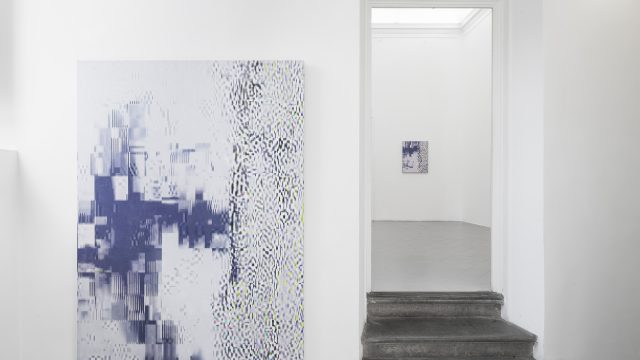Indigo may be the color for our uncertain time—doleful, elusive blue. Its history is a freighted one: The plant from which the dye is derived is entangled with colonialism, slave labor, and the formation of global markets. The crop may be confused with its proxy: a similar dye can be drawn from the less lovely named woad, a weed. Even the constitution of the hue is slippery: Though Isaac Newton assigned it base color status, the subjective experience of the hue rarely separates it from blue or violet and scientists dispute its location on the optical spectrum. (I, for one, never understood BIV.) Of course, indigo colors denim— that textile found the world over that signals democracy and resilience in uneasy conflict with its production, largely in China and India, under exploitative labor practices.
Denim is everywhere in Korakrit Arunanondchai’s work, but you’ll likely miss the indigo in his exhibition “with history in a room filled with people with funny names 4.” A video and a gallery-spanning garden installation elaborate the cosmology the artist has developed in previous projects, wading into such themes as global capitalism, versioning, the reign of the optic, animism, and yet-incalculable expressions of our material world. Indigo powder—from a plant grown in Isan, Thailand and given to the artist by a friend who ferments the organism to produce dye—is steeped in water that courses through the totemic installation, as is a scant trace of dirt on which the late King of Thailand walked. Like most elements in the exhibition, both tinctures serve as mnemonic distillations of the artist’s relationships with his friends and family, his native country and the one in which he lives, technology and his past work. Here, they are part of an admixture whose components seem vast and unknowable to the viewer. Its effect, though, resonates with a familiar melancholy that attends moments in which our subjectivity dilates to the extent that we lose ourselves.
“Will you find beauty in this sea of data?” Arunanondchai asks, in Thai, in the video, “we left it behind just for you.” In keeping with the previous three videos in his series “Painting with history in a room filled with people with funny names,” the artist engages a hypnotic epistolary exchange with the drone spirit Chantri, voiced in French by his mother, a language teacher. These missives pay homage to Chris Marker’s cine-essay Sans Soleil (1983) but also to the tribute of Marker’s film, Alfred Hitchcock’s Vertigo (1958). Both similarly center on the urge to recreate, relive, revisit—to find intimacy with that which evades and, in so doing, holds power over us. We’ve seen this impulse in Arunanondchai’s past works: His body, or that of his twin, is pressed against images in an attempt to mark or affect them the way they mark or affect the body. He attempts to forge a non-unidirectional engagement with the spectacle. But here, in a fractured cinematic space of speculation and documentary, the artist faces down the mercurial force of memory. Specifically, he addresses the seeming contradiction between the fluid subjectivity required to contextualize the images that comprise memory, and the technology we have designed to care for it. What happens to memories when they are sloughed off into machines, he seems to ask. Might they recombine to form new paradigmatic presents based on some alienated version of our past? Will they forget us, and can they survive us?
Of course, the human body itself rewires memories; it obfuscates them or ceases their production. The video component of the new work opens with a close crop of the hands of the artist’s grandmother, who is slipping into dementia. She perfunctorily performs a ritual with a slipper, a toy block, a stack of magazines. She touches these objects, weighing them, prompting the viewer to reconsider the function and texture of each anew. She opens the quotidian things up, unwraps them, as one does to a word when it is repeated such that its meaning decomposes into unfamiliar sound.
“The present stopped existing for me.” Though the line describes Arunanondchai’s grandmother’s amnesic mind, it likewise reflects an atemporal space in which his work often resides. Here are past and future, originals and copies, ancestors and spirits. In the video’s dreamscape, the artist is at times accompanied by a post-apocalypse rat who has, along with the digital world, outlived humans and grown fat on that which destroyed them. (This rat was the subject of the artist’s previous video.) Arunanondchai enters the constructed parallel universe of a safari in South Africa, staring down an elephant, watching apes fuck, but also noticing the grass underfoot. He visits the spectacularly suspect Dhammakaya Wat, Thailand’s largest Buddhist temple, whose leader has been accused of embezzlement and heresy, believes that Steve Jobs was reincarnated, and is known to intone “Be rich, be rich, be rich!” He also summons the Naga—a serpent spirit who represents for the artist that which cannot be subsumed by code or subjected to state power—or the Oarfish, its earthly manifestation. In the videos, these spaces and elements contribute to an unmoored temporality that works against the idealized, monolithic now of real time: that eternal present sought by financialized and surveilled data streams. They offer other flows, other bandwidths, each contoured by other logics and powers.
“with history in a room filled with people with funny names 4” squares on the reality that, on November 8, the present violently cut a new shape. Many of us then felt the stinging betrayal of technology. We felt the dissolution of our construction of the social world, or at least the trajectory to which we believed—and were led to believe—it would cleave. Throughout the video are clips of protests in the United States: White roses are raised in foggy New York streets, Maxwell belts a Kate Bush ballad to women marching in DC. But then the masses we see are those gathering with candles in darkness, to mourn the death of the King of Thailand—another rupture a world away. In these moments of extremity, we tend to return to our bodies, to the urgent experience of the present. Arunanondchai brings us there, too—his video is textured with the sound of heavy, calculated breathing, whether it voices a quelled panic or the focus of meditation we are unsure.
Embedded in the sprawling root-like forms of the installation are interiorly lit blown-glass pods, themselves indexes of breath, but also indexes of moments in which the body and technology are simply aligned in intention. In the video, we see Arunanondchai’s grandmother stroke these forms, for which she could have no context, and of which no memory will likely be created. “Someone explained the idea of reincarnation to me once,” the artist muses, “the universe is made up of one big river of spirits, both yours and mine and everything else that exits. The spirits are constantly reincarnating on a timeline that is neither the future, the past, nor the present. So Chantri, in this sense, you could be my grandmother.” In a sense, he means, this drone, this technological spirit, could be kin. Indeed, the material reality of the digital world mirrors that of our entropic physical one—in it, all of us can be reduced to binary code, just as all of our fleshy bodies will someday be reduced to soil. Perhaps there is comfort in this, in its certainty. Donna Haraway recently wrote that we must “make possible partial and robust biological-cultural-political-technological recuperation and recomposition, which must include mourning irreversible losses,” in order to live and die well. Arunanondchai’s newest contribution to his ever-proliferating project mourns a constellation of irreversible losses—familial, political, cultural. It marks a reckoning with the turbulence of indigo.
– Annie Godfrey Larmon
with objects by Tipyavarna Nitibhon
Performance with boychild on April 15, 2017

HD video, costume, pillows, 23 minutes 31 seconds.
Courtesy C L E A R I N G, New York.
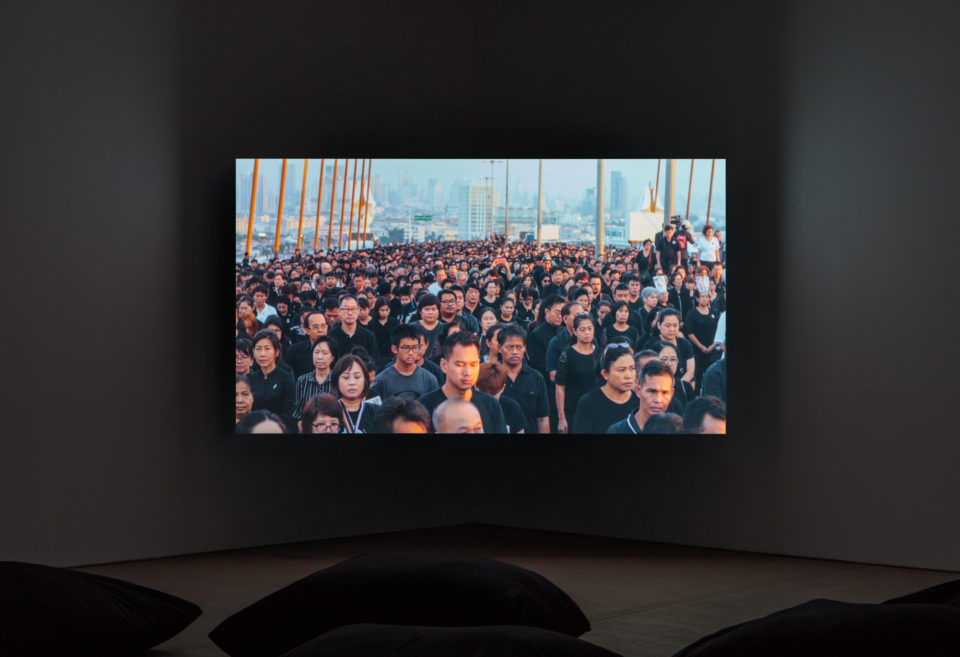
HD video, costume, pillows, 23 minutes 31 seconds.
Courtesy C L E A R I N G, New York.

HD video, costume, pillows, 23 minutes 31 seconds.
Courtesy C L E A R I N G, New York.

HD video, costume, pillows, 23 minutes 31 seconds.
Courtesy C L E A R I N G, New York.

Indigo powder, dad’s dirt, seafood waste, blown glass, clay, LED lights, fiber, optics, electrical wires, found wood, roots of dead trees, bamboo, banana
leaves, coconuts, carpet, resin, prayer objects for the naga, IV bags, old car, parts, dead pine trees, surround sound.
Courtesy C L E A R I N G, New York.
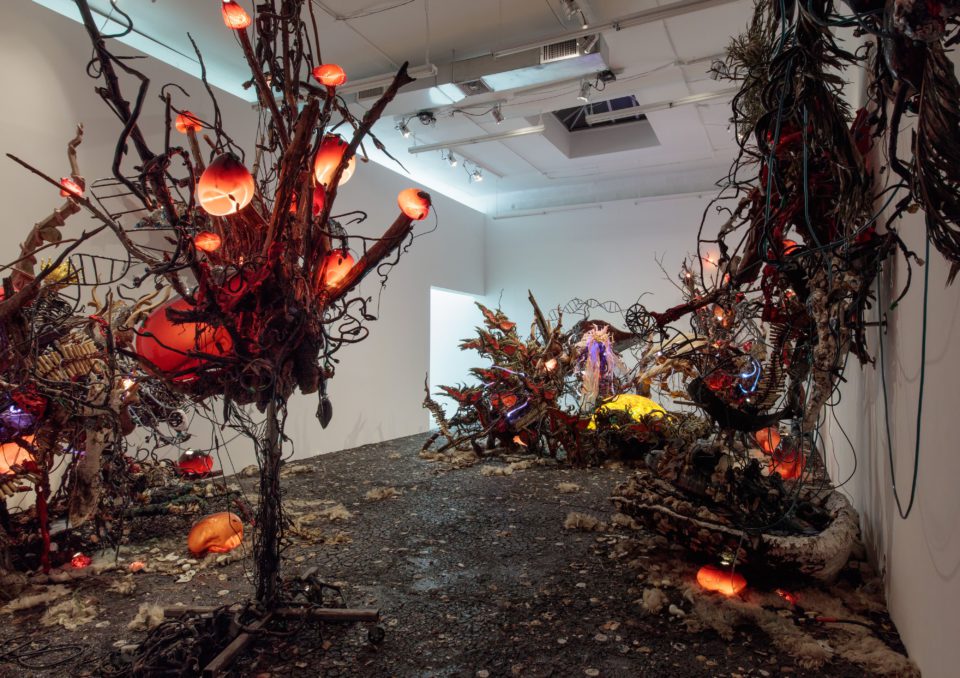
Indigo powder, dad’s dirt, seafood waste, blown glass, clay, LED lights, fiber, optics, electrical wires, found wood, roots of dead trees, bamboo, banana
leaves, coconuts, carpet, resin, prayer objects for the naga, IV bags, old car, parts, dead pine trees, surround sound.
Courtesy C L E A R I N G, New York.
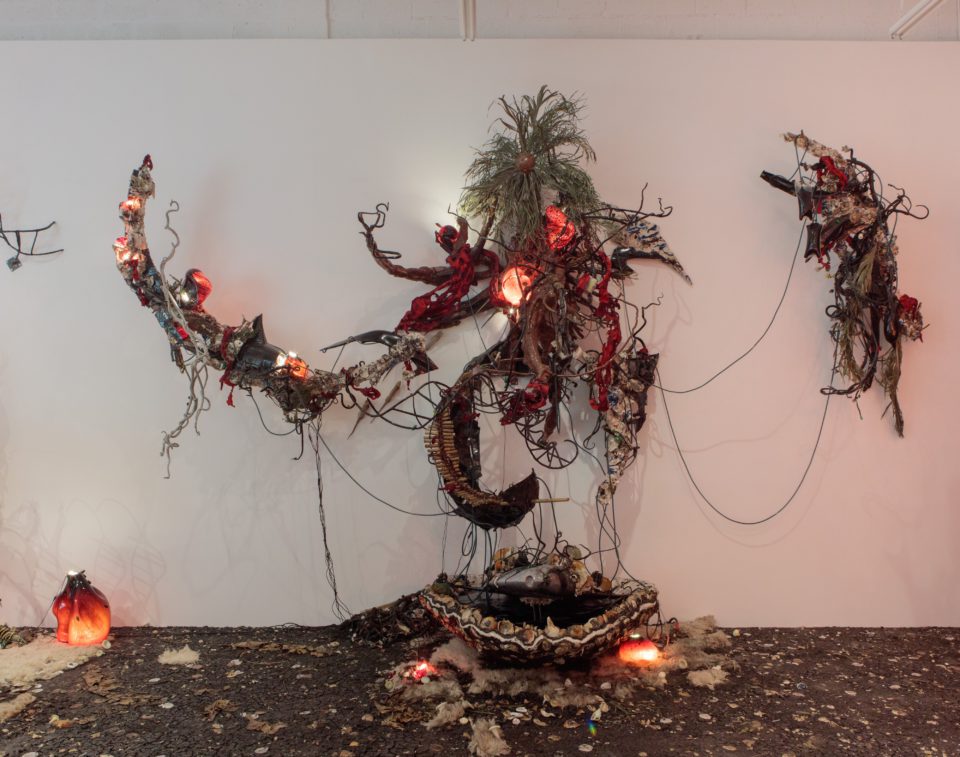
Indigo powder, dad’s dirt, seafood waste, blown glass, clay, LED lights, fiber, optics, electrical wires, found wood, roots of dead trees, bamboo, banana
leaves, coconuts, carpet, resin, prayer objects for the naga, IV bags, old car, parts, dead pine trees, surround sound.
Courtesy C L E A R I N G, New York.

Indigo powder, dad’s dirt, seafood waste, blown glass, clay, LED lights, fiber, optics, electrical wires, found wood, roots of dead trees, bamboo, banana
leaves, coconuts, carpet, resin, prayer objects for the naga, IV bags, old car, parts, dead pine trees, surround sound.
Courtesy C L E A R I N G, New York.

Indigo powder, dad’s dirt, seafood waste, blown glass, clay, LED lights, fiber, optics, electrical wires, found wood, roots of dead trees, bamboo, banana
leaves, coconuts, carpet, resin, prayer objects for the naga, IV bags, old car, parts, dead pine trees, surround sound.
Courtesy C L E A R I N G, New York.
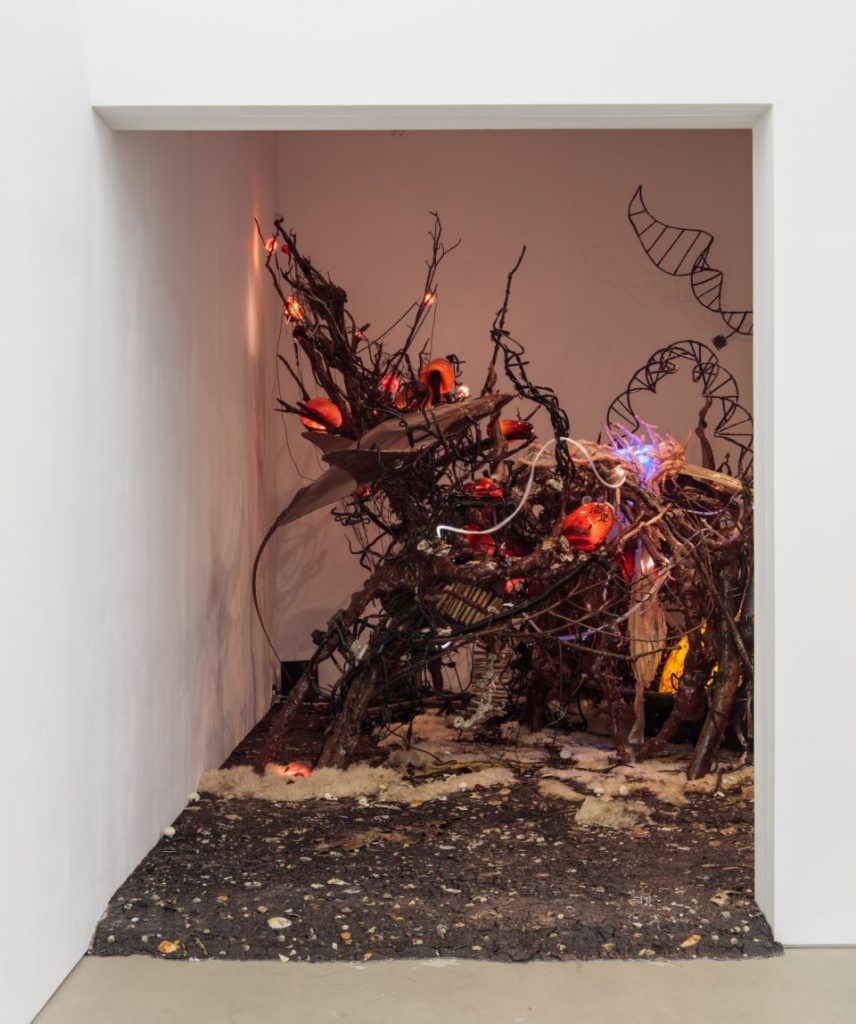
Indigo powder, dad’s dirt, seafood waste, blown glass, clay, LED lights, fiber, optics, electrical wires, found wood, roots of dead trees, bamboo, banana
leaves, coconuts, carpet, resin, prayer objects for the naga, IV bags, old car, parts, dead pine trees, surround sound.
Courtesy C L E A R I N G, New York.

Objects made by Tipyavarna Nitibhon, (b.1927)
Courtesy C L E A R I N G New York.
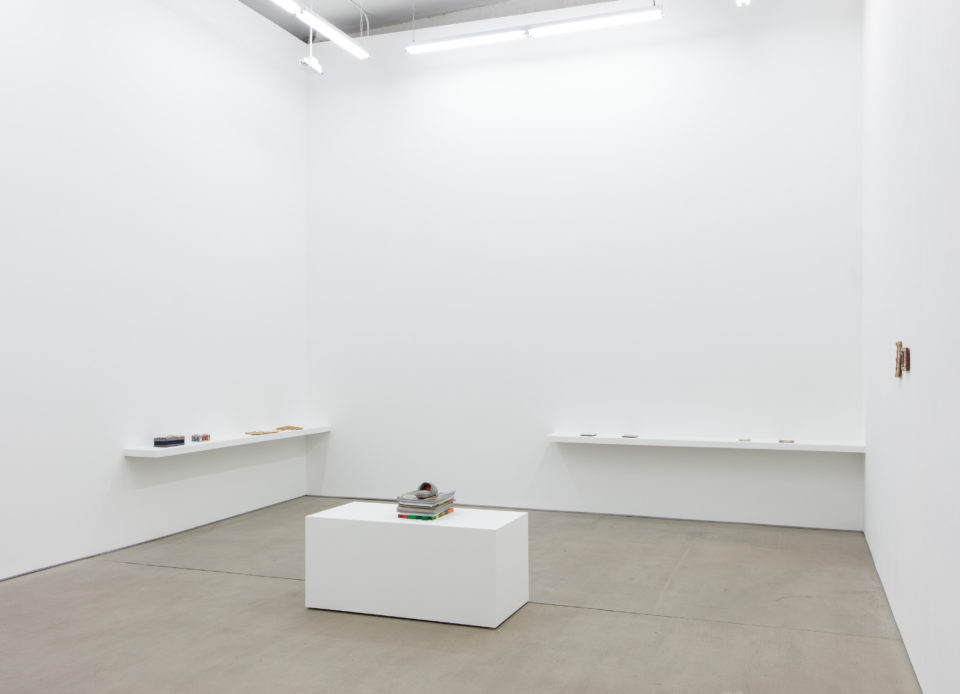
Objects made by Tipyavarna Nitibhon, (b.1927)
Courtesy C L E A R I N G New York.

Objects made by Tipyavarna Nitibhon, (b.1927)
Courtesy C L E A R I N G New York.
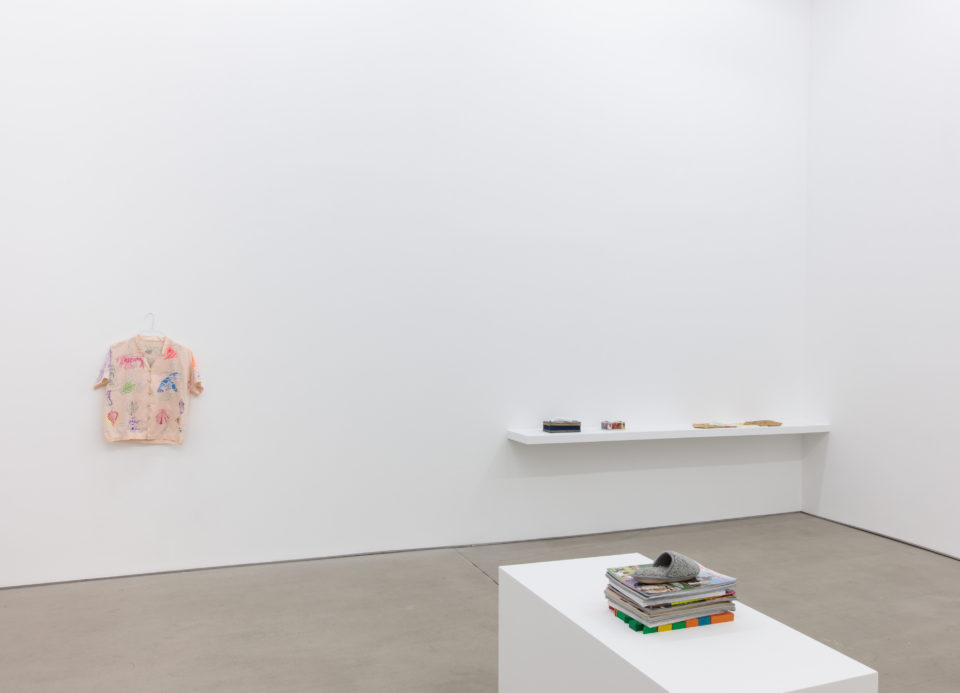
Objects made by Tipyavarna Nitibhon, (b.1927)
Courtesy C L E A R I N G New York.
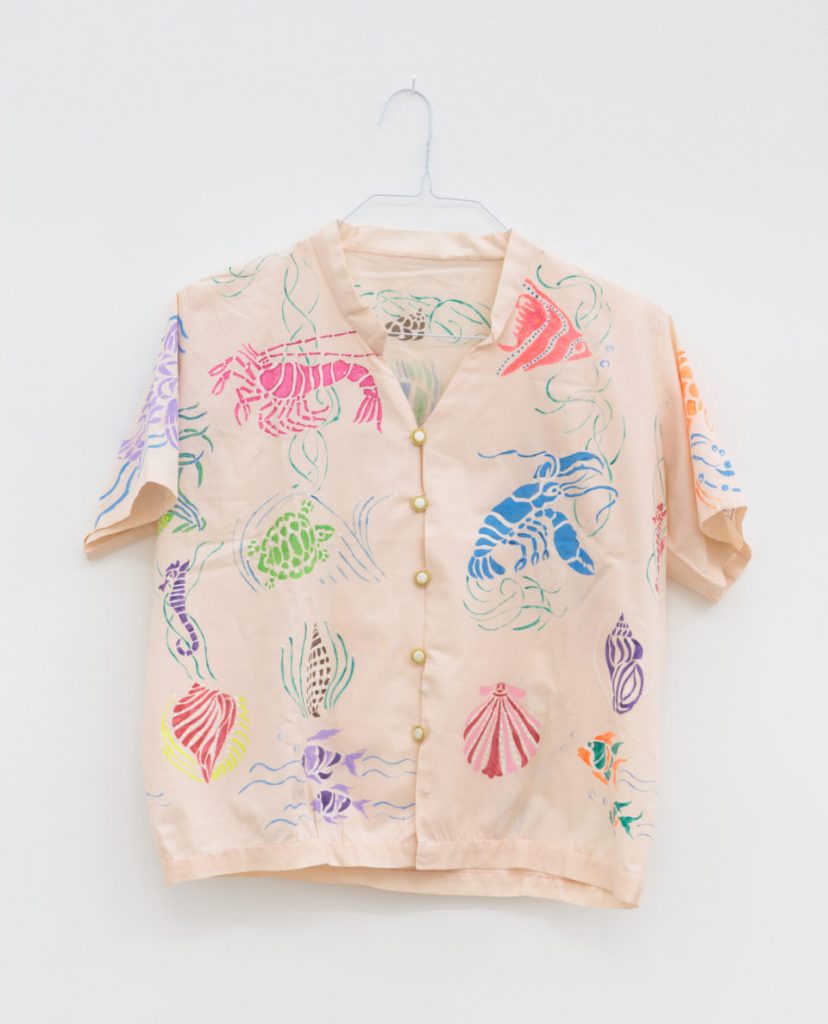
Objects made by Tipyavarna Nitibhon, (b.1927)
Courtesy C L E A R I N G New York.
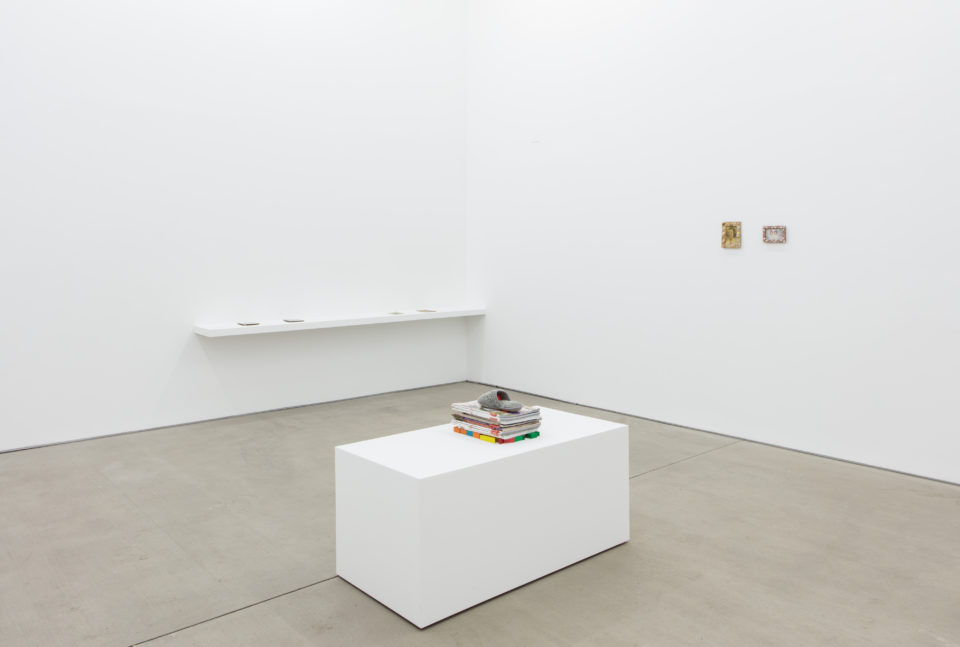
Objects made by Tipyavarna Nitibhon, (b.1927)
Courtesy C L E A R I N G New York.
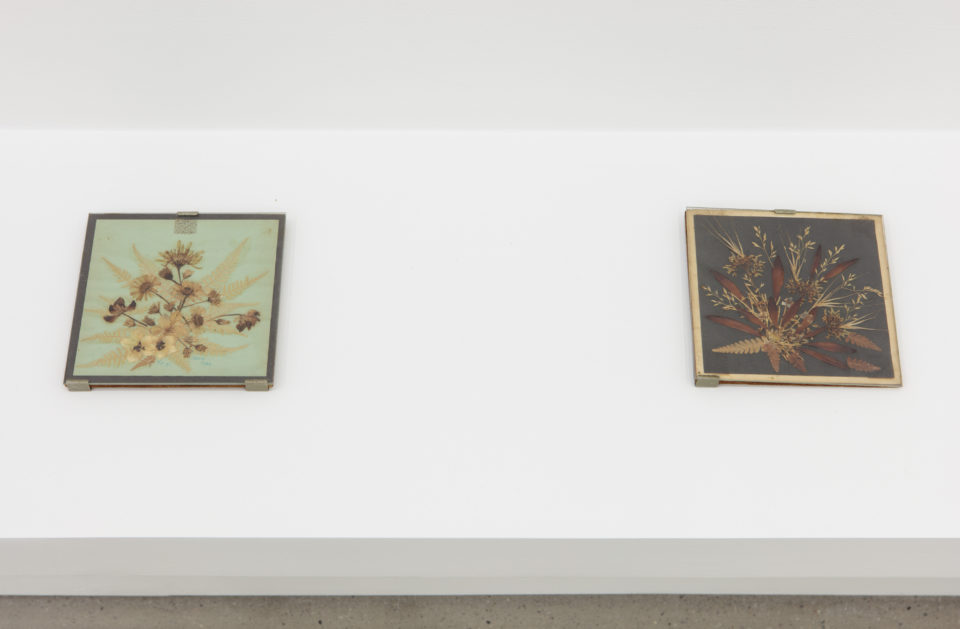
Objects made by Tipyavarna Nitibhon, (b.1927)
Courtesy C L E A R I N G New York.



